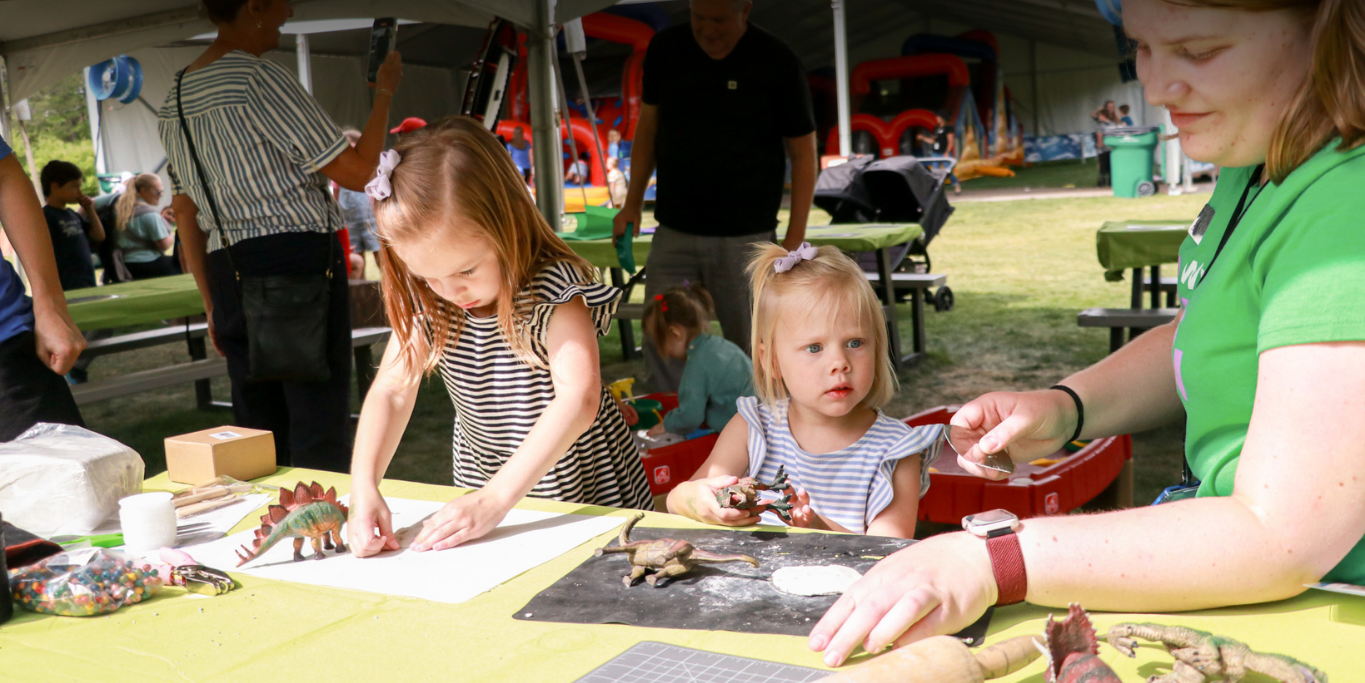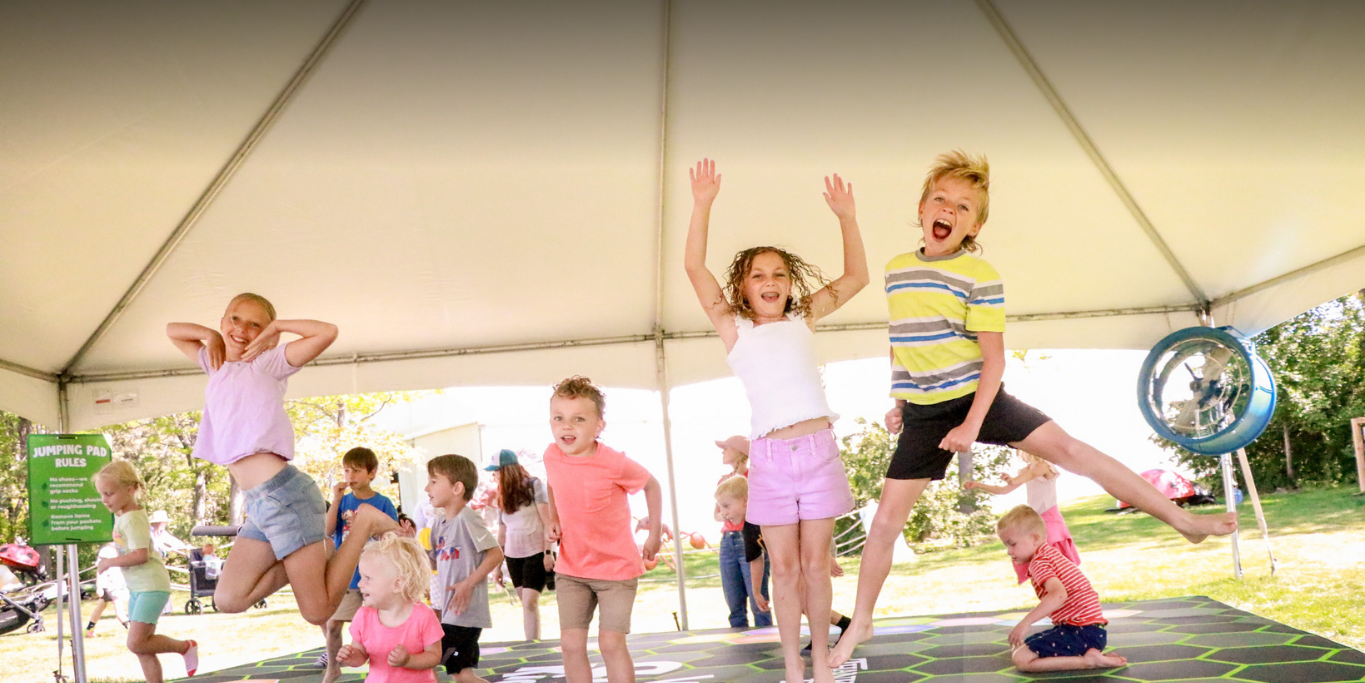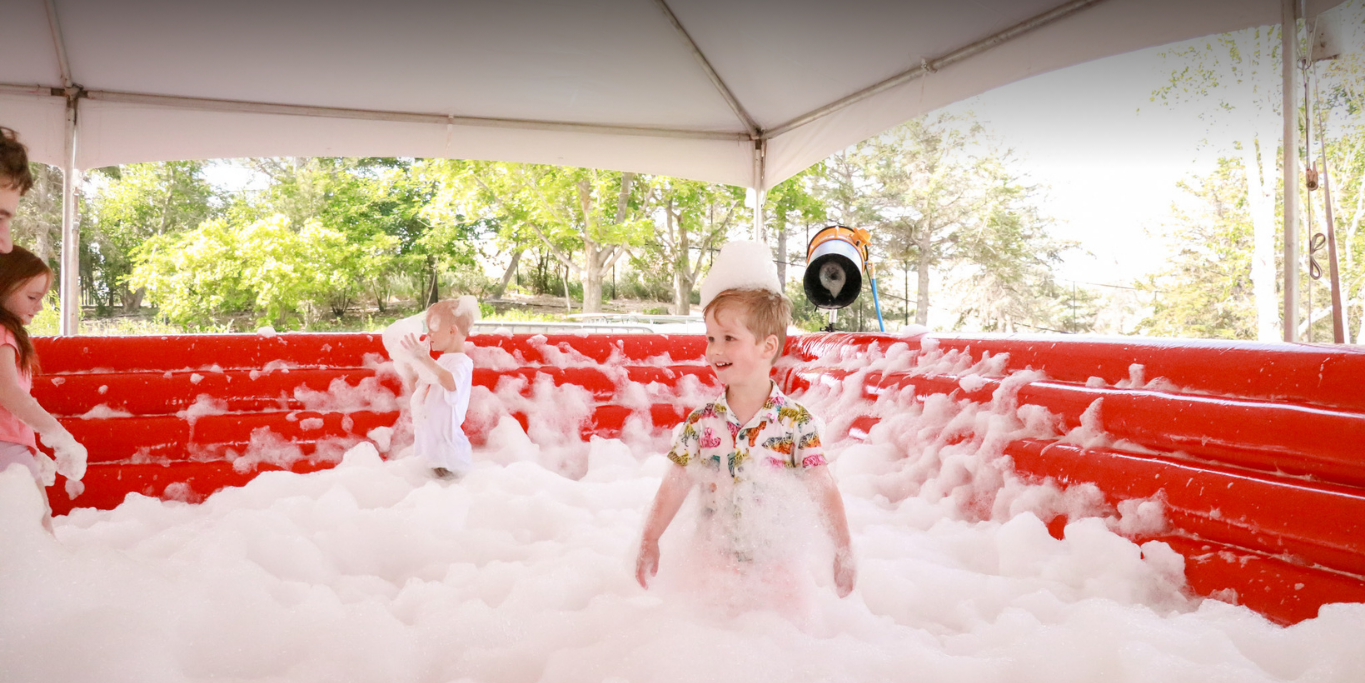Dinosaur Island is a prehistoric party that brings dinosaurs to life in the Ashton Gardens. With 32 life-sized, animatronic dinosaurs, Dinosaur Island lets you measure up to some of the biggest beasts known to man. Seeing as Utah is home to thousands of dinosaur bones and active dig sites all over the state, many of the dinosaurs at Dinosaur Island have been found in Utah (some have even been discovered here)!
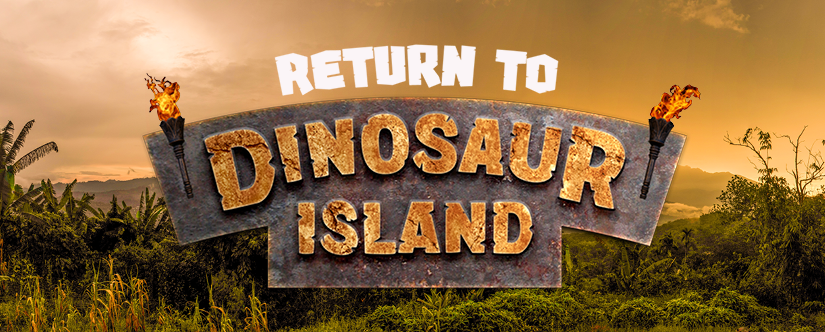
Let’s meet the dinosaurs at Dinosaur Island! Here’s a dinosaur fun fact about each creature you can see this summer:
Dimetrodon | Early Permian | Carnivore
Fossils Found in Utah
Did you know that the Dimetrodon had two sets of teeth to better grab and eat their prey? Talk about a long appointment at the dentist.
Edaphosaurus | Early Permian | Herbivore
The Edaphosaurus was a sailed synapsid – an early ancestor of the first mammals! Humans are also synapsids, so technically, the Edaphosaurus is a (very distant) cousin.
Diplocaulus | Late Carboniferous | Carnivore
The Diplocaulus was a 3-foot-long amphibian with a boomerang-shaped head that helped it swim as fast as it could in the water. It was like a salamander, but way bigger and with sharper teeth.
Tenontosaurus | Middle Cretaceous | Herbivore
Fossils Found in Utah
Even though the Tenontosaurus weighed around two tons and was 20 feet long, they were surprisingly agile and used their long tail to hit and stun predators.
Brachiosaurus | Late Jurassic | Herbivore
Fossils Found in Utah
The Brachiosaurus is known for its super long neck – but did you know they could even rear up on their back legs to get even taller? I bet they had a killer view.
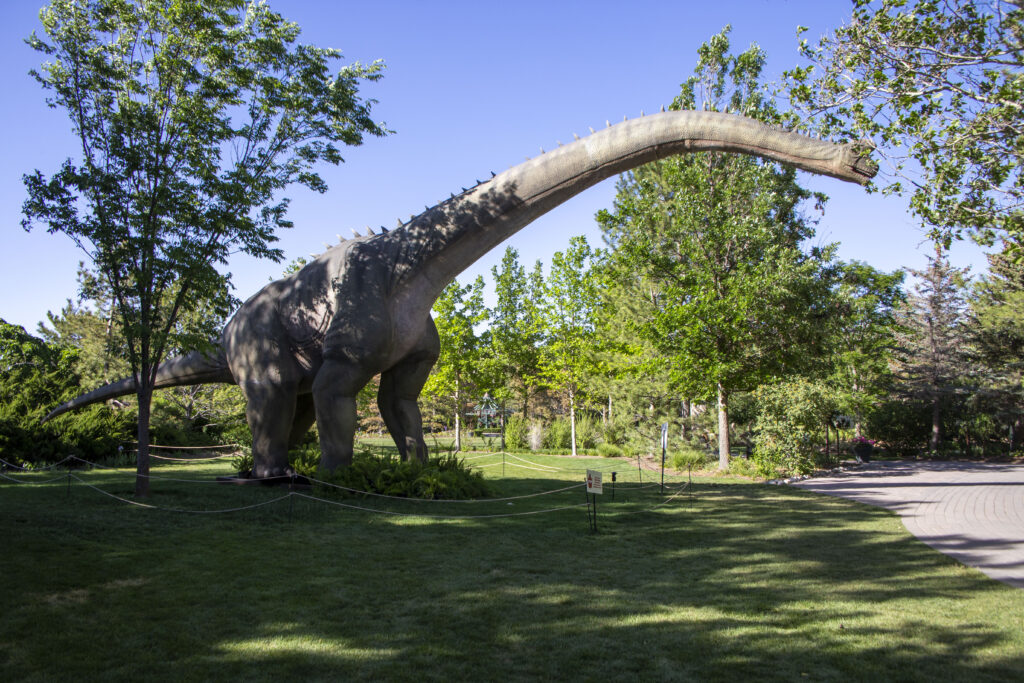
Styracosaurus | Late Cretaceous | Herbivore
The Styracosaurus had a spiky frill that might’ve been used to attract mates. Kind of like a really nice hairline, the better the frill, the hotter they were.
Ankylosaurus | Late Cretaceous | Herbivore
The Ankylosaurus had incredible defensive skills, including protective armor around its head and face and a club-like tail that, when swung, was powerful enough to stun large predators. Like the intense version of Heads or Tails.
Triceratops | Late Cretaceous | Herbivore
The Triceratops was one of the largest land animals of its time, measuring up to 30 feet long. Those three horns must’ve contributed to that, right?
Tyrannosaurus Rex | Late Cretaceous | Carnivore
We all know the T. rex has a big head and little arms, but those arms were actually useful in gripping prey. They had more use than you’d think!
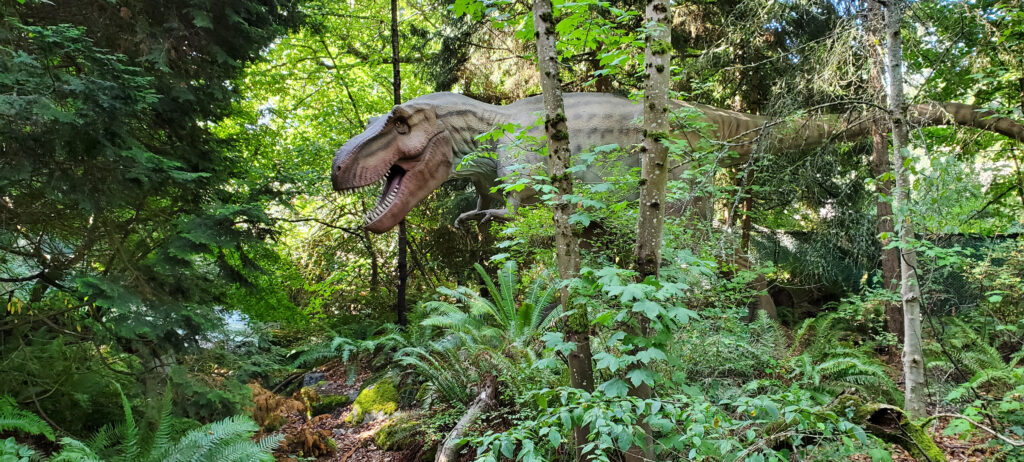
Deinonychus | Early Cretaceous | Carnivore
Fossils Found in Utah
We often don’t associate dinosaurs as having a lot of smarts, but Deinonychus was a highly developed animal that adopted many social behaviors to coordinate hunting with members of its pack. They were easily the scariest gang of their time.
Deinosuchus | Late Cretaceous | Carnivore
Picture the largest and scariest crocodile. Then make it bigger and scarier. That’s Deinosuchus, an apex killer that hunted dinosaurs, turtles, and fish both on land and in the sea (although they were best in water, not super agile on land).
Stegosaurus | Late Jurassic | Herbivore
Fossils Found in Utah
I can’t imagine the Stegosaurus doing any critical thinking – yes, their brain was *literally* the size of a walnut.
Giganotosaurus | Late Cretaceous | Carnivore
This was one of the largest carnivorous dinosaurs that ever lived – reaching lengths of up to 43 feet and weighing nearly 8 tons. This guy was the predator and never the prey.
Lessemsaurus | Late Triassic | Herbivore
The Lessemsaurus is named after “Dino” Don Lessem, a paleontologist who advised Steven Spielberg during the filming of Jurassic Park and the creator of the animatronic dinosaurs in Dinosaur Island.
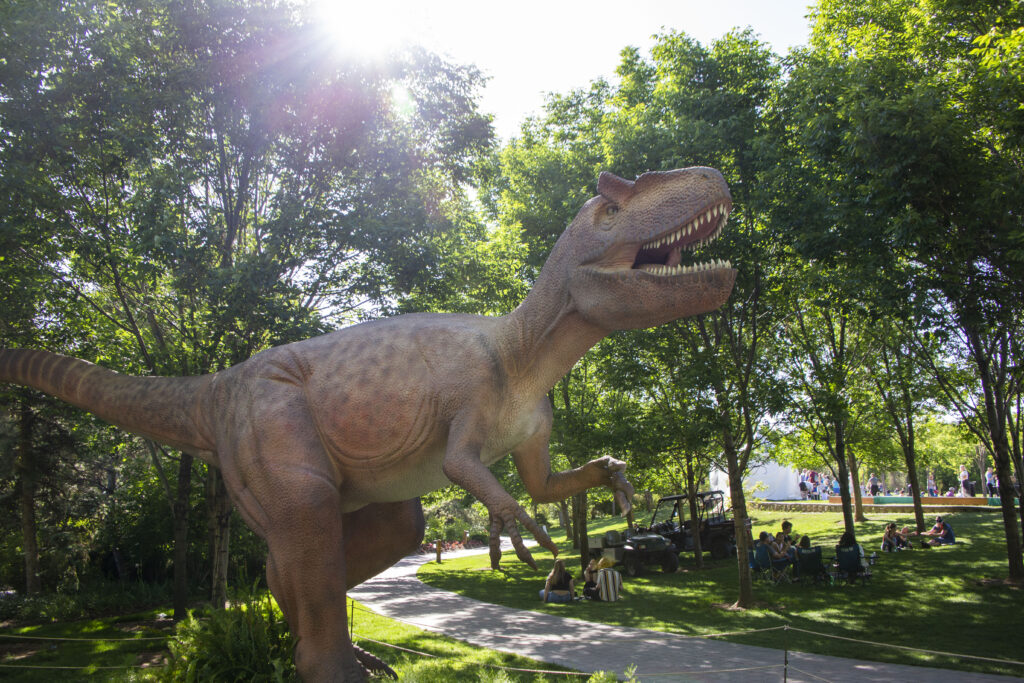
Quetzalcoatlus | Late Cretaceous | Carnivore
If you took an American bald eagle and multiplied its wingspan by six, you’d have the wingspan of the Quetzalcoatlus, one of the largest flying animals of all time.
Gallimimus | Late Cretaceous | Omnivore
The Gallimimus was one of the fastest dinosaurs of all time, possibly running up to 50 miles per hour. That would mean that it could run a marathon in just over 30 minutes.
Dryosaurus | Late Jurassic | Herbivore
This dino was a socialite, adopting complex social behaviors to chat with other members of the herd.
Maiasaura | Late Cretaceous | Herbivore
Known as the “good mother lizard,” the Maiasaura was a stellar parent, with evidence showing that this dino would live alongside its young until adulthood.
Mamenchisaurus | Late Jurassic | Herbivore
Half of the body of a Mamenchisaurus was its neck, reaching lengths of up to 70 feet and weighing 50 tons. This dino probably wouldn’t lie about its height on a dating app.
There’s so much more to learn about these incredible creatures. Come visit them at Dinosaur Island from May 27 to August 26 in the Ashton Gardens at Thanksgiving Point. Click here to purchase tickets now!
